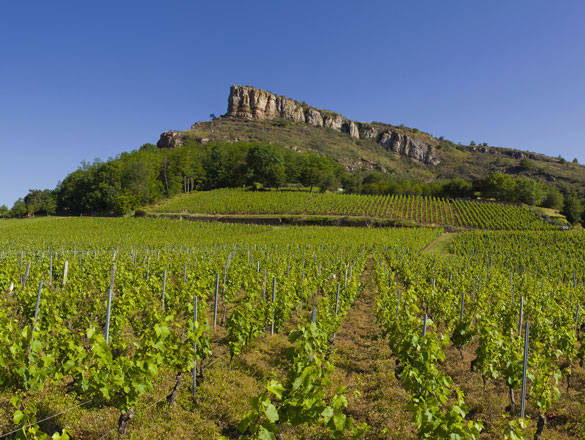

The vineyards of Bourgogne produce some great wines with a historical and international reputation. However, the region is not simply limited to its iconic appellations. In addition to its Village Premier Cru and Grand Cru AOCs, it also produces a range of wonderful Régionale and Village appellations to explore.
You will also find a full list of the Bourgogne’s Climats and lieux-dits on this page.
Check out the complete list of the 84 Bourgogne appellations.
However, your exploration has only just begun. Bourgogne wines have never before offered such high quality. Besides our range of internationally celebrated wines, try some of our lesser-known appellations where there are lots of surprises in store.
And for a fun way to find out more about the wines on offer, try out our “Which Bourgogne wine is right for me?” quiz, or check out Bourgogne Maps to take an interactive tour of the region.
Village appellation
VIGNOBLE DU MÂCONNAIS
11 septembre 1936
Whites only - Chardonnay.
Area under production*:
1 hectare (ha) = 10,000 m2 = 24 ouvrées.
756.71 ha (including 158.22 ha Premier Cru)
Average annual yield**:
1 hectolitre (hl) = 100 litres = 133 bottles.
29,650 hl
*In 2022 **5-year average, 2017-2021
Appellation Village of the Mâconnais region (Saône-et-Loire).
This appellation includes 22 Premiers Crus Climats since 21/11/2020.
Producing communes: Fuissé, Solutré-Pouilly, Vergisson, Chaintré.
The appellations POUILLY-FUISSÉ and POUILLY-FUISSÉ PREMIER CRU may be followed by the name of the Climat of origin.

Elegant and full of charm, this white wine has a colour ranging from pale to deep gold, flecked with green. Different families of aromas make up the bouquet: mineral notes (silex), almond and hazelnut, citrus notes (lemon, grapefruit, and pineapple), white fruits (peaches), bracken, acacia, breadcrumbs, buttered brioche, and honey. In the mouth it is possible to discern the differences between wines from different plots. The texture is opulent, and the structure, thanks partly to the wine’s natural richness, is full of flavour. It is by nature delicate and distinguished. This wine is not to be confused with the Pouilly-Fumé, which comes from the banks of the Loire River.

White: straightforward, rich and complex, it has a characteristic hint of minerality which allows it to partner noble crustaceans (king prawns, lobster, crawfish) as well as foie gras. With acidity and smoothness so nicely in balance, it goes well with white meats such as veal or poultry in cream sauce, as well as many varieties of goat’s cheese. Its aromatic power means it can also match spicy and perfumed exotic dishes such as couscous, fish tajines, or sweet-and-sour prawns. Sushi is also enhanced by its minerality.
Serving temperature: 11 to 13°C.

The rocky outcrops of Solutré and Vergisson, emblematic of these vineyards, remind us that from a height of 500 metres, 200 million years of history is looking down on us! Indeed, 20,000 years ago one of the most fully evolved prehistoric cultures flourished here. This AOC, instituted in 1936, takes in the four villages of Solutré-Pouilly, Fuissé, Vergisson and Chaintré.

Lying on a foundation of fossiliferous limestone identical to those found further north in the Côte-d’Or, the Bajocien escarpments of Solutré and Vergisson owe their dramatic profile to the presence of hard fossil corals which have resisted erosion. The vines are planted on the slopes and at the foot of these two hills on clay-limestone soils of Jurassic origin mixed with scree from up-slope and, in one spot, schist. The hillsides are cut into by little steep-sided streams which give the slopes an easterly or south-easterly exposure. Altitudes: 200 to 300 metres.
